-
 Bitcoin
Bitcoin $84,491.4272
0.35% -
 Ethereum
Ethereum $1,629.9188
2.22% -
 Tether USDt
Tether USDt $0.9996
0.00% -
 XRP
XRP $2.1255
-1.74% -
 BNB
BNB $584.1717
-0.14% -
 Solana
Solana $129.3048
-0.25% -
 USDC
USDC $0.9997
-0.02% -
 TRON
TRON $0.2531
0.03% -
 Dogecoin
Dogecoin $0.1604
-1.68% -
 Cardano
Cardano $0.6338
-2.36% -
 UNUS SED LEO
UNUS SED LEO $9.3913
0.02% -
 Chainlink
Chainlink $12.7602
-0.11% -
 Avalanche
Avalanche $19.9912
0.34% -
 Stellar
Stellar $0.2392
-2.25% -
 Sui
Sui $2.2195
-2.36% -
 Shiba Inu
Shiba Inu $0.0...01208
-0.23% -
 Hedera
Hedera $0.1655
-1.48% -
 Toncoin
Toncoin $2.8091
-2.20% -
 Bitcoin Cash
Bitcoin Cash $326.8962
-4.93% -
 Polkadot
Polkadot $3.7124
0.19% -
 Litecoin
Litecoin $76.2033
-3.08% -
 Dai
Dai $0.9997
-0.03% -
 Hyperliquid
Hyperliquid $15.5385
-0.46% -
 Bitget Token
Bitget Token $4.3039
0.39% -
 Pi
Pi $0.7320
-2.31% -
 Ethena USDe
Ethena USDe $0.9988
0.00% -
 Monero
Monero $212.5291
2.84% -
 Uniswap
Uniswap $5.3787
-0.07% -
 OKB
OKB $53.1970
-1.18% -
 Pepe
Pepe $0.0...07372
2.06%
What is ERC-721A? How does it reduce gas fees?
ERC-721A optimizes NFT minting by allowing batch creation in one transaction, significantly reducing gas fees compared to the traditional ERC-721 standard.
Apr 13, 2025 at 09:35 am
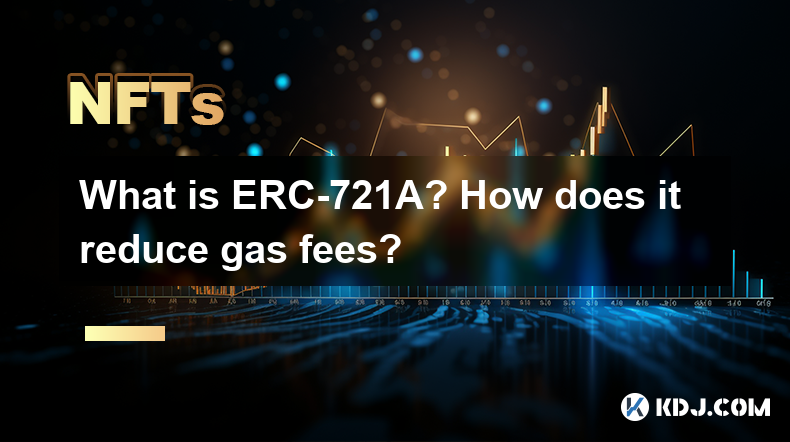
What is ERC-721A? How does it reduce gas fees?
ERC-721A is a specialized version of the ERC-721 standard, which is widely used for creating non-fungible tokens (NFTs) on the Ethereum blockchain. The primary goal of ERC-721A is to optimize the minting process of NFTs, particularly in bulk, to significantly reduce gas fees. This article will delve into the specifics of ERC-721A, its mechanisms for reducing gas fees, and how it compares to the traditional ERC-721 standard.
Understanding ERC-721 and Its Limitations
The ERC-721 standard, introduced in 2018, revolutionized the world of digital assets by enabling the creation of unique tokens that can represent ownership of various items, from digital art to virtual real estate. However, one of the significant drawbacks of ERC-721 is the high gas fees associated with minting multiple tokens, especially during periods of high network congestion.
When minting multiple NFTs using the traditional ERC-721 standard, each token requires a separate transaction, leading to increased gas costs. This inefficiency becomes particularly pronounced during large-scale NFT drops, where thousands of tokens need to be minted simultaneously.
Introduction to ERC-721A
ERC-721A was developed to address the gas fee issue by optimizing the minting process. It achieves this by allowing multiple NFTs to be minted in a single transaction, thereby reducing the overall gas cost. The "A" in ERC-721A stands for "accelerated," reflecting its focus on speeding up and reducing the cost of NFT minting.
The core innovation of ERC-721A lies in its ability to batch mint NFTs. Instead of executing separate transactions for each token, ERC-721A uses a single transaction to mint multiple tokens, which significantly lowers the gas fees.
How ERC-721A Reduces Gas Fees
To understand how ERC-721A reduces gas fees, it's essential to look at the technical aspects of its implementation. The primary mechanism is batch minting, which allows for the creation of multiple NFTs in one go.
Batch Minting: When using ERC-721A, developers can specify the number of tokens to be minted in a single transaction. This means that instead of paying gas fees for each individual token, the cost is spread across all tokens minted in the batch. For example, if you want to mint 100 NFTs, ERC-721A allows you to do so in one transaction, significantly reducing the total gas cost compared to minting 100 separate tokens.
Optimized Data Structures: ERC-721A also employs optimized data structures to minimize the amount of data that needs to be processed during minting. By using more efficient data storage and retrieval methods, ERC-721A reduces the computational overhead, further lowering gas fees.
Reduced Transaction Overhead: Each transaction on the Ethereum network incurs a base fee, regardless of the number of operations it contains. By consolidating multiple minting operations into a single transaction, ERC-721A minimizes the number of transactions required, thereby reducing the overall transaction overhead.
Comparing ERC-721A and ERC-721
To better understand the benefits of ERC-721A, it's helpful to compare it directly with the traditional ERC-721 standard.
Gas Efficiency: The most significant advantage of ERC-721A is its gas efficiency. While ERC-721 requires a separate transaction for each token, ERC-721A can mint multiple tokens in one transaction, leading to substantial gas savings.
Minting Speed: ERC-721A also offers faster minting speeds due to its batch minting capabilities. This is particularly beneficial for large-scale NFT projects where time is of the essence.
Complexity and Compatibility: While ERC-721A offers significant advantages in terms of gas efficiency and speed, it may be more complex to implement than ERC-721. Additionally, not all existing tools and platforms may support ERC-721A, which could limit its adoption in some cases.
Implementing ERC-721A: A Step-by-Step Guide
For developers interested in leveraging the benefits of ERC-721A, here is a detailed guide on how to implement it:
Set Up Your Development Environment: Ensure you have a compatible Ethereum development environment set up, including tools like Truffle or Hardhat.
Install the ERC-721A Contract: You can find the ERC-721A contract on platforms like GitHub. Download or clone the repository to your local machine.
Modify the Contract: Depending on your project's needs, you may need to modify the ERC-721A contract. This could involve adjusting the batch size or adding custom logic.
Deploy the Contract: Use your development environment to deploy the ERC-721A contract to the Ethereum network. This typically involves compiling the contract, migrating it to the network, and verifying it on a blockchain explorer.
Mint NFTs: Once the contract is deployed, you can start minting NFTs using the batch minting function. Specify the number of tokens you want to mint and execute the transaction.
Verify and Test: After minting, verify that the tokens have been created correctly and test the functionality of your NFTs to ensure everything is working as expected.
Real-World Applications of ERC-721A
Several projects have already adopted ERC-721A to take advantage of its gas-saving capabilities. For instance, some NFT marketplaces and artists have used ERC-721A to conduct large-scale drops more efficiently and cost-effectively.
NFT Marketplaces: Platforms that facilitate the buying and selling of NFTs can use ERC-721A to reduce the cost of listing multiple items, making it more affordable for creators to showcase their work.
Art and Collectibles: Artists and collectors can benefit from ERC-721A by minting large collections of digital art or other collectibles at a lower cost, making it more feasible to create and distribute unique digital assets.
Gaming and Virtual Worlds: In the gaming industry, ERC-721A can be used to mint in-game assets and virtual real estate more efficiently, enhancing the user experience by reducing the cost of acquiring digital items.
Frequently Asked Questions
Q: Can ERC-721A be used with existing NFT platforms?
A: While ERC-721A offers significant benefits, its adoption depends on the platform's support. Some platforms may already support ERC-721A, while others may require updates to their infrastructure to accommodate it. It's essential to check with the specific platform you are using to see if they support ERC-721A.
Q: Are there any security concerns with using ERC-721A?
A: Like any smart contract, ERC-721A must be implemented correctly to ensure security. Developers should thoroughly test and audit their contracts to mitigate potential vulnerabilities. Additionally, users should be cautious when interacting with new or untested implementations of ERC-721A.
Q: How does ERC-721A affect the user experience?
A: ERC-721A can significantly improve the user experience by reducing the cost and time associated with minting NFTs. Users can mint larger collections more affordably, making it easier to participate in the NFT ecosystem.
Q: Can ERC-721A be combined with other Ethereum standards?
A: Yes, ERC-721A can be combined with other Ethereum standards, such as ERC-20 for fungible tokens or ERC-1155 for semi-fungible tokens. This flexibility allows developers to create more complex and versatile token systems.
Disclaimer:info@kdj.com
The information provided is not trading advice. kdj.com does not assume any responsibility for any investments made based on the information provided in this article. Cryptocurrencies are highly volatile and it is highly recommended that you invest with caution after thorough research!
If you believe that the content used on this website infringes your copyright, please contact us immediately (info@kdj.com) and we will delete it promptly.
- US President Donald Trump Issues Sharp Rebuttal to Information About "exceptions" to the Tariff Standoff with China
- 2025-04-15 00:50:13
- Mantra (OM) token recovery is the company's 'preeminent and primary concern', says CEO John Mullin
- 2025-04-15 00:50:13
- Shocked as Bitcoin Experienced a Record Decline After Trump's Tariffs Were Announced
- 2025-04-15 00:45:13
- Binance and Laser Digital Distance Themselves From Responsibility as Mantra (OM) Token Crashes 90%
- 2025-04-15 00:45:13
- Dawgz AI ($DAGZ): The Meme Coin with Real Utility Is Back and Ready to Boom
- 2025-04-15 00:40:13
- The International Monetary Fund is warning countries about an impending global recession
- 2025-04-15 00:40:13
Related knowledge
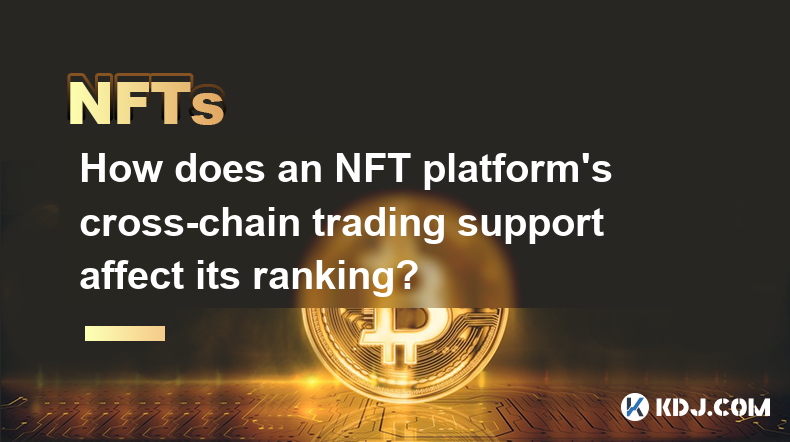
How does an NFT platform’s cross-chain trading support affect its ranking?
Apr 14,2025 at 04:49pm
The impact of an NFT platform's cross-chain trading support on its ranking is a multifaceted topic that delves into the technical capabilities, user experience, and market dynamics of the platform. Cross-chain trading refers to the ability of an NFT platform to facilitate the exchange of non-fungible tokens across different blockchain networks. This fea...
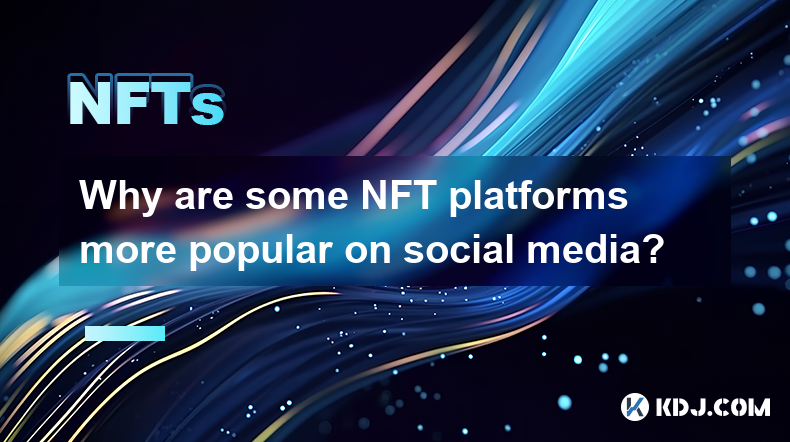
Why are some NFT platforms more popular on social media?
Apr 15,2025 at 01:00am
The popularity of NFT platforms on social media can be attributed to a variety of factors that influence their visibility, engagement, and overall appeal to users. Understanding these factors can provide insights into why certain platforms capture more attention and interaction on social media channels. User Experience and InterfaceUser experience (UX) ...

Which NFT platforms perform best in virtual land transactions?
Apr 14,2025 at 02:56pm
The NFT market has seen significant growth in virtual land transactions, with several platforms emerging as leaders in this space. Decentraland, The Sandbox, and Somnium Space are among the top performers, each offering unique features and opportunities for users. In this article, we will delve into these platforms, examining their strengths, transactio...
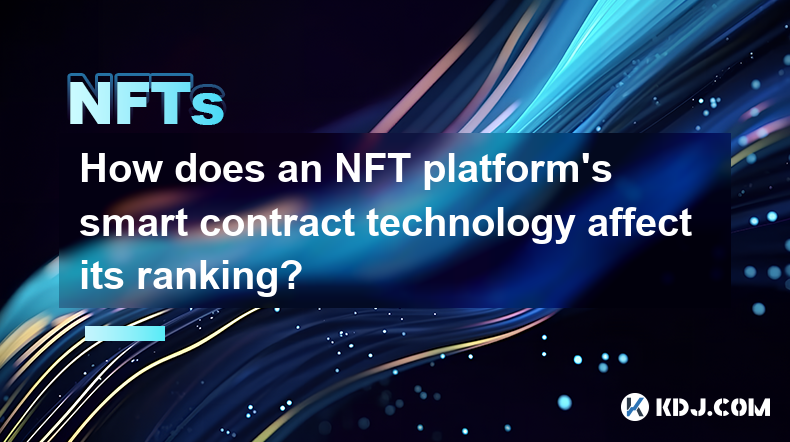
How does an NFT platform’s smart contract technology affect its ranking?
Apr 14,2025 at 11:42pm
Introduction to NFT Platforms and Smart ContractsThe world of Non-Fungible Tokens (NFTs) has seen explosive growth, with platforms like OpenSea, Rarible, and SuperRare becoming household names in the crypto space. At the heart of these platforms lies smart contract technology, which plays a crucial role in their operation and, consequently, their rankin...
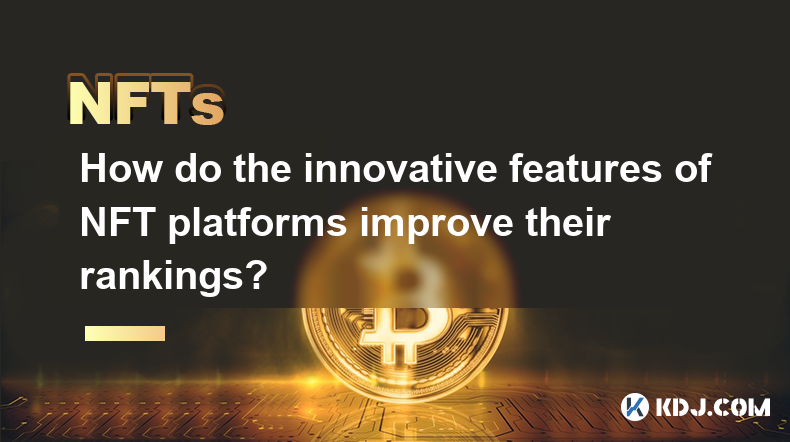
How do the innovative features of NFT platforms improve their rankings?
Apr 15,2025 at 12:42am
The world of Non-Fungible Tokens (NFTs) has seen rapid growth and evolution, leading to the emergence of numerous NFT platforms. These platforms vary widely in terms of features and functionality, which directly impacts their rankings and popularity within the cryptocurrency community. Innovative features play a crucial role in distinguishing top-perfor...
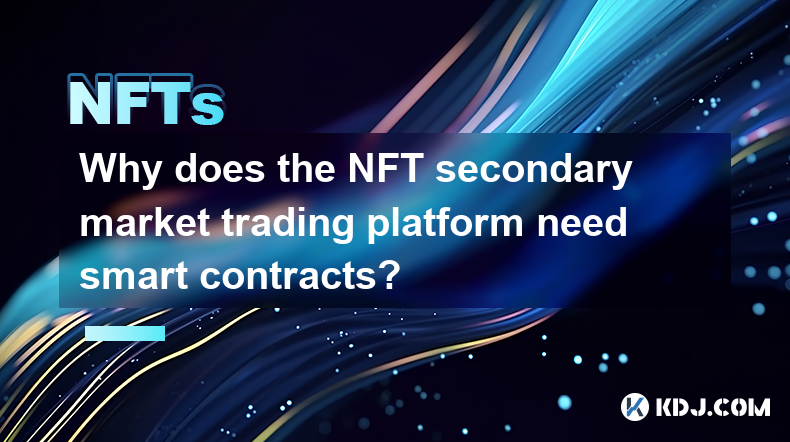
Why does the NFT secondary market trading platform need smart contracts?
Apr 14,2025 at 05:07pm
Why does the NFT secondary market trading platform need smart contracts? Non-Fungible Tokens (NFTs) have revolutionized the way digital assets are created, owned, and traded. At the heart of NFT trading platforms, especially in the secondary market, lies the crucial technology of smart contracts. This article explores the necessity and functionality of ...

How does an NFT platform’s cross-chain trading support affect its ranking?
Apr 14,2025 at 04:49pm
The impact of an NFT platform's cross-chain trading support on its ranking is a multifaceted topic that delves into the technical capabilities, user experience, and market dynamics of the platform. Cross-chain trading refers to the ability of an NFT platform to facilitate the exchange of non-fungible tokens across different blockchain networks. This fea...

Why are some NFT platforms more popular on social media?
Apr 15,2025 at 01:00am
The popularity of NFT platforms on social media can be attributed to a variety of factors that influence their visibility, engagement, and overall appeal to users. Understanding these factors can provide insights into why certain platforms capture more attention and interaction on social media channels. User Experience and InterfaceUser experience (UX) ...

Which NFT platforms perform best in virtual land transactions?
Apr 14,2025 at 02:56pm
The NFT market has seen significant growth in virtual land transactions, with several platforms emerging as leaders in this space. Decentraland, The Sandbox, and Somnium Space are among the top performers, each offering unique features and opportunities for users. In this article, we will delve into these platforms, examining their strengths, transactio...

How does an NFT platform’s smart contract technology affect its ranking?
Apr 14,2025 at 11:42pm
Introduction to NFT Platforms and Smart ContractsThe world of Non-Fungible Tokens (NFTs) has seen explosive growth, with platforms like OpenSea, Rarible, and SuperRare becoming household names in the crypto space. At the heart of these platforms lies smart contract technology, which plays a crucial role in their operation and, consequently, their rankin...

How do the innovative features of NFT platforms improve their rankings?
Apr 15,2025 at 12:42am
The world of Non-Fungible Tokens (NFTs) has seen rapid growth and evolution, leading to the emergence of numerous NFT platforms. These platforms vary widely in terms of features and functionality, which directly impacts their rankings and popularity within the cryptocurrency community. Innovative features play a crucial role in distinguishing top-perfor...

Why does the NFT secondary market trading platform need smart contracts?
Apr 14,2025 at 05:07pm
Why does the NFT secondary market trading platform need smart contracts? Non-Fungible Tokens (NFTs) have revolutionized the way digital assets are created, owned, and traded. At the heart of NFT trading platforms, especially in the secondary market, lies the crucial technology of smart contracts. This article explores the necessity and functionality of ...
See all articles























































































